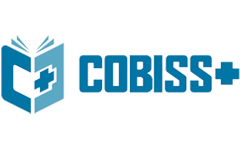A Study on Tax Payer Perception on Tax E-Filling in Less Developed Areas in Malaysia
DOI:
https://doi.org/10.61841/yfa0re45Keywords:
E-Filling, Less Developed Areas, Perceived Ease of Use, Perceived CredibilityAbstract
(Tax e-Filing is an e-Government service which has been implement by many countries as of today. In year 2005, Inland Revenue Board (IRB) of Malaysia has a shift in pattern by implementing e-Filing which comes under Self-Assessment System (SAS) and will focus more on audit field. E-Filing process is an easier system, accurate, fast and secure in terms of payments. The researcher for this present study aims to investigate individual taxpayer’s perception on tax E-Filling in less developed areas in Malaysia. In Malaysia, incentives and special tax cuts from Government are available for companies that sets up operations in less-developed areas. The researcher has used this incentive as a method to determine less developed areas and focus this research in Segamat, Johor and Hilir Perak. The researcher has adopted quantitative method by conducting interview among 7 individuals in Segamat and 7 individuals in Hilir Perak. The result from this study indicates that perceived ease of use and tax general knowledge on e-Filling system impacts taxpayer’s acceptance on e-Filling in less developed areas in Malaysia and taxpayers in less developed areas generally do not have issue with the perceived credibility of the system. The implication of this study suggests that Inland Revenue Board (IRB) should increase and strengthen their awareness programs in less developed areas in Malaysia to educate taxpayers so that it will simultaneously improve the attitude of taxpayers to use this electronic system.
Downloads
References
1. Alabede, J. O., Idris, K. M., & Ariffin, Z. (2011). Determinants of tax compliance behavior: Proposed Model for
Nigeria, 78(78).
2. Alm, J., & Torgler, B. (2011). Do Ethics Matter? Tax Compliance and Morality. Journal of Business Ethics,
101(4), 635–651. https://doi.org/10.1007/s10551-011-0761-9
3. Asrinanda, Y. (2018). The Effect of Tax Knowledge, Self-Assessment System, and Tax Awareness on Taxpayer
Compliance. International Journal of Academic Research in Business and Social Sciences, 8(10).
4. Aziz, A.S. and Idris, M.K. (2012) The Determinants of Tax E-Filing among Tax Preparers in Malaysia. World
Journal of Social Sciences, 2, 182-188
5. Chiang, B. and Limato, J. (2017). The Use of Technology in Tax Preparation: A Closer Examination of Electronic
Filing and Filing Errors. Journal of Corporate Accounting & Finance, 28(3), pp.47-60.
6. Cleary, D. (2013). A Survey on Attitudes and Behaviour towards Tax and Compliance, (September 2009).
7. Davis, F. (1989). Perceived Usefulness, Perceived Ease of Use, and User Acceptance of Information
Technology. MIS Quarterly, 13(3), p.319.
8. Dosm.gov.my. (2019). [online] Available at:
es/1(b)1-Dr_Marliza_Mohamed.pdf.
9. Gbadago, F. (2017). Personal Tax Relief Schemes: Awareness and Usage among Personal Income Taxpayers
within Kumasi Metropolis of Ghana. Asian Journal of Economics, Business and Accounting, 3(1), pp.1-16
10.Hung, Shin-Yuan, et al. “Determinants of User Acceptance of the E-Government Services: The Case of Online Tax
Filing and Payment System.” Government Information Quarterly, vol. 23, no. 1, Jan. 2006, pp. 97–122,
www.sciencedirect.com/science/article/pii/S0740624X05000948, 10.1016/j.giq.2005.11.005.
11.Ibrahim, I. and Lamidi, W. (2019). Perceived Usefulness and the Acceptance of Tax E-Filing System: Malaysia
and Nigeria Cases. Icoec.my. Available at: http://icoec.my/download/icoec_2017/ICoEC2017_147.pdf
12.Ilias, A., Suki, N., Yasoa’, M. and Rahman, R. (2008). A Study of Taxpayers’ Intention in Using E-Filing System:
A Case in Labuan F.T s. Computer and Information Science, 1(2).
13.Kamarulzaman, Y. and Che Azmi, A. (2010). Tax E-filing Adoption in Malaysia: A Conceptual Model. Journal of
E-Government Studies and Best Practices, Vol. 2010 (2010)(Article ID 175966).
14.Lai, M.L., Sheikh Obid, S.N. and Meera, A.K. (2004) Towards an Electronic Filing System: A Malaysian Survey.
e-Journal of Tax Research, 2, 1-15
15.McLeod, Alexander, et al. “Individual Taxpayer Intention to Use Tax Preparation Software: Examining
Experience, Trust, and Perceived Risk.” ISOneWorld Conference. June 2-4, 2008.
16.Moorthy, M., Samsuri, A., Hussin, S., Othman, M. and Chelliah, M. (2014). E-Filing Behaviour among Academics
in Perak State in Malaysia. Technology and Investment, 05(02), pp.79-94.
17.Mustapha, B. (2013). The Impact of Perceived Ease of Use and Perceived Usefulness on an Online Tax
System. International Journal of Advance Research, IJOAR, 1(4).
18.Saliza Aziz. “The Determinants of Tax E-Filing among Tax Preparers in Malaysia.” World, 2015, www.academia.edu/28733079/The_Determinants_of_Tax_Efiling_among_Tax_Preparers_in_ Malaysia.
19.Tallaha, A., Shukor, Z. and Abu Hassan, N. (2014). Factors Influencing E-Filing Usage Among Malaysian Taxpayers: Does Tax Knowledge Matters. Jurnal Pengurusan, 40, pp.91-101.
20.Torgler, B. (2002). Speaking to theorists and searching for facts : tax morale. Journal of Economic Surveys, 16(5), 657–683. https://doi.org/10.1111/1467-6419.00185
Downloads
Published
Issue
Section
License
Copyright (c) 2020 AUTHOR

This work is licensed under a Creative Commons Attribution 4.0 International License.
You are free to:
- Share — copy and redistribute the material in any medium or format for any purpose, even commercially.
- Adapt — remix, transform, and build upon the material for any purpose, even commercially.
- The licensor cannot revoke these freedoms as long as you follow the license terms.
Under the following terms:
- Attribution — You must give appropriate credit , provide a link to the license, and indicate if changes were made . You may do so in any reasonable manner, but not in any way that suggests the licensor endorses you or your use.
- No additional restrictions — You may not apply legal terms or technological measures that legally restrict others from doing anything the license permits.
Notices:
You do not have to comply with the license for elements of the material in the public domain or where your use is permitted by an applicable exception or limitation .
No warranties are given. The license may not give you all of the permissions necessary for your intended use. For example, other rights such as publicity, privacy, or moral rights may limit how you use the material.
















